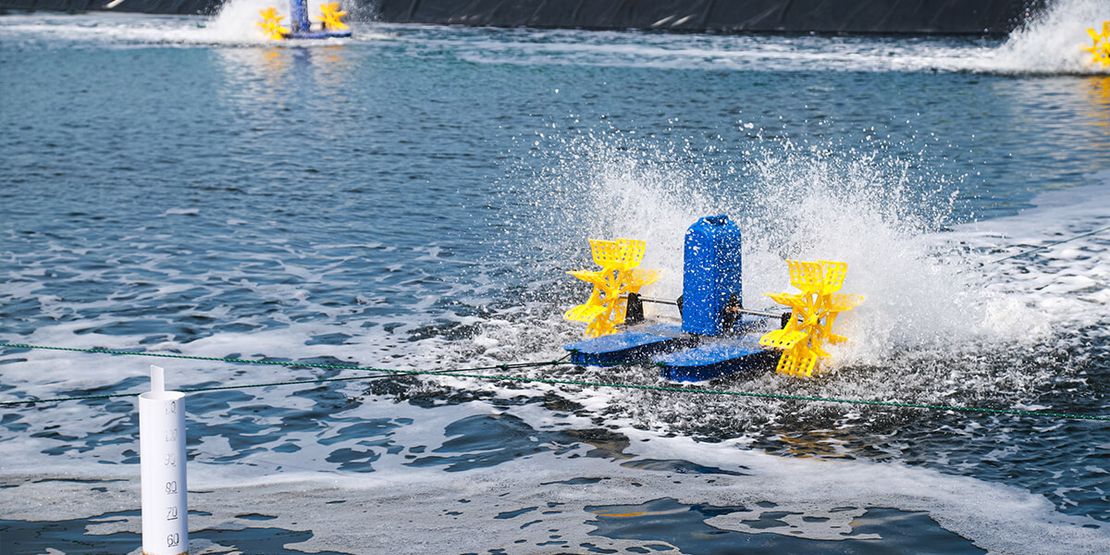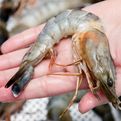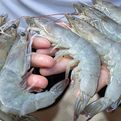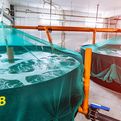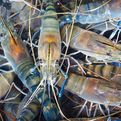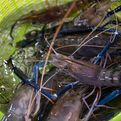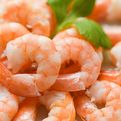Aeration Options in Shrimp Farming: A Complete Guide
Aeration stands as a fundamental pillar of shrimp farming, serving as a lifeline for water quality maintenance and ensuring the well-being of shrimp populations. With various aeration options available, each tailored to specific pond conditions and farm requirements, understanding their applications and nuances is essential for farmers.
In this detailed guide, we unravel the most common aeration techniques in shrimp farming, shedding light on their functionalities, benefits, and optimal use cases to empower farmers in making informed decisions for their operations.
#1 Surface Aerators
Surface aerators, adept at fostering water-to-air gas exchange, thrive in shallow ponds or tanks. By inducing a flow of water on the pond surface, these devices elevate oxygen levels, mitigate water temperature, and bolster water circulation. Their ease of installation and operation make them a favorable choice for farmers seeking efficient aeration solutions without intricate setup requirements.
#2 Bottom Aerators
Designed to introduce air at the pond's base, bottom aerators excel in deeper ponds, where oxygen depletion poses a persistent challenge. By infusing oxygen into lower water layers, these aerators enhance water oxygenation, stimulate circulation, and curtail temperature fluctuations. Their targeted deployment ensures optimal oxygen distribution, fostering conducive conditions for shrimp growth and health.
#3 Subsurface Aerators
Operating beneath the pond's surface, subsurface aerators offer an effective means of oxygenation and circulation in deeper water bodies. By diffusing air at varying depths, these aerators uplift oxygen levels across the water column, bolstering shrimp habitat suitability and mitigating stratification-related risks. Their versatility in addressing oxygen deficiencies makes them a valuable asset for maintaining water quality and shrimp well-being.
#4 Diffused Aeration
Harnessing fine-bubble diffusers, diffused aeration systems infuse oxygen into the water, promoting uniform oxygen distribution and enhancing circulation. Ideal for ponds with high stocking densities, these systems optimize oxygen utilization, ensuring equitable access for shrimp populations. Their ability to mitigate oxygen stratification and enhance water quality makes them indispensable in intensive shrimp farming settings.
#5 Wind-Driven Aeration
Leveraging nature's force, wind-driven aeration harnesses wind energy to stimulate surface water movement, facilitating gas exchange and oxygen replenishment. Particularly suited for ponds in windy locales, this cost-effective method enhances oxygenation without reliance on external power sources. Its simplicity and eco-friendliness make it an attractive choice for farmers seeking sustainable aeration solutions.
Maximizing Overall Shrimp Farming Productivity
Selecting the appropriate aeration system is paramount in optimizing shrimp farming success, considering factors such as pond dimensions, stocking density, and environmental conditions. Each aeration option presents unique advantages and considerations, necessitating careful evaluation to align with specific farm requirements.
By leveraging the insights gleaned from this guide, shrimp farmers can navigate the diverse landscape of aeration technologies with confidence, ensuring optimal water quality, shrimp health, and overall farm productivity.
Riley Sinclair (Digital Aqua Bear)
Hi! I'm Riley Sinclair (Digital Aqua Bear), and I'm exploring the world of digital aquaculture farms. Join me as I delve into innovative methods and sustainable practices for cultivating aquatic life in digital environments. Let's uncover the potential of digital aquaculture farms to revolutionize food production and environmental sustainability.
More From Digital Aqua Farm
Motors in Shrimp Farming: Choosing Between With and Without Inverters
Riley Sinclair (Digital Aqua Bear)
Shrimp Diseases in Thailand: A Complete Guide for Farmers
Riley Sinclair (Digital Aqua Bear)
Future of Shrimp Farming: Embracing Indoor Cultivation
Riley Sinclair (Digital Aqua Bear)
Global Shrimp Industry: Knowing the Key Players and Dynamics
Riley Sinclair (Digital Aqua Bear)
Shrimp Farming in Thailand: Navigating Challenges and Embracing Sustainability
Riley Sinclair (Digital Aqua Bear)
Navigating the Lunar Influence: Managing Shrimp Farming During Full Moons
Riley Sinclair (Digital Aqua Bear)


